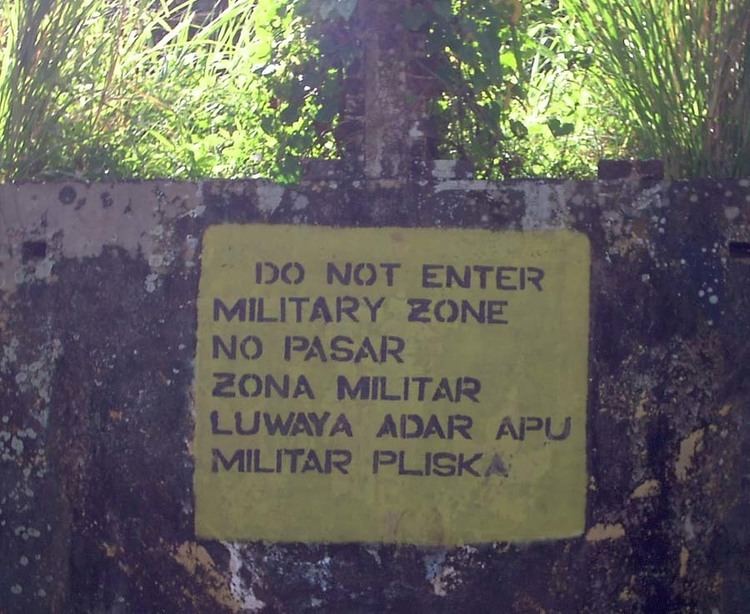 | ||
The official language of Nicaragua is Spanish; however, Nicaraguans on the Caribbean coast speak indigenous languages and also English. The communities located on the Caribbean coast also have access to education in their native languages.
Contents
Map of Nicaragua
Spanish
Spanish, or Nicañol as Nicaraguan Spanish is sometimes referred to, is spoken by 90% of the country's population. In Nicaragua the Voseo form is common, just as in other countries in Central and South America such as Argentina, Bolivia, Costa Rica, coastal parts of Colombia, Honduras or Paraguay. Spanish has many different dialects spoken throughout Latin America, Central American Spanish is the dialect spoken in Nicaragua.
Some characteristics of Nicaraguan phonology include:
English
English is also spoken among Nicaraguans, expats from the United States and Canada, and widely spoken by the tourism sector. In the Caribbean coast, due to the African and English heritage, cities like Bluefields and Corn Island, English language is spoken in the form of English creole by the majority of the population, along with other indigenous languages that coexist.
Indigenous languages
Several indigenous peoples on the Caribbean coast still use their native language, the main languages being Miskito language, Sumo language, and Rama language. Other Indigenous languages spoken include Garifuna.
Miskito is a Misumalpan language spoken by the Miskito people in northeastern Nicaragua along the Caribbean coast, especially in the North Caribbean Coast Autonomous Region. The Miskito language is the most widely spoken indigenous language in Nicaragua, this is because the Miskito people also hold the highest population of Indigenous people in the country.
Sumo (also known as Sumu) is a Misumalpan language spoken in Nicaragua by the Sumo people. There is wide dialectal variation, and sometimes the major dialects may be listed as separate languages.
Rama is one of the indigenous languages of the Chibchan family spoken by the Rama people on the island of Rama Cay and south of lake Bluefields on the Caribbean Coast of Nicaragua. The Rama language is severely endangered. Their language was described as "dying quickly for lack of use" as early as the 1860s. By 1980, the Rama were noted as having "all but lost their original ethnic language", and had become speakers of a form of English creole instead, Rama Cay Creole which is spoken by 8,000–9,000 people.
Language revival efforts began in 1980–1981 under the Sandinistas however, they were not successful. The fieldwork for the first dictionary of Rama was done during this time by Robin Schneider, a graduate student from the University of Berlin. In 1992, only approximately 36 fluent speakers could be found among an ethnic population of 649 individuals in 1992, of whom only a few scattered individuals live outside Nicaragua. The number of speakers on Rama Cay island was only 4 in 1992, due to language shift to English that engendered Rama Cay Creole.
Nicaraguan Sign Language has been of particular interest to linguists as one of the few languages whose birth was recorded.
Minority languages
Nicaragua has many minority groups. Many ethnic groups in Nicaragua, such as the Chinese Nicaraguans and Palestinian Nicaraguans, have maintained their ancestral languages while also speaking Spanish and/or English. Minority languages include Chinese, Arabic, German, Italian among others.
Extinct languages
Nicaragua has a total of 3 extinct languages.
The Matagalpa language, which was also known as Pantasmas, was a Misumalpan language spoken by the indigenous Matagalpa people. In 1981 the population of the Matagalpa people was estimated at 18,000–20,000. The Matagalpa people live in the Central highlands of Nicaragua in the departments of Matagalpa and Jinotega. Matagalpa became extinct in the 19th century; the eponymous people now speak Spanish. Only a few short word lists remain. It was closely related to Cacaopera.
The Sutiaba language (often misspelled "Subtiaba") is an extinct indigenous Oto-Manguean language which was spoken on the Pacific slope of Nicaragua. In 1925 Edward Sapir wrote an article based on scant evidence arguing for the inclusion of Sutiaba in the his hypothesized Hokan group. Others have linked Sutiaba to the Jicaque and Tol languages, but since Suárez's work it is generally accepted that Sutiaba is an Oto-Manguean language. When Sapir wrote about it in 1925 it was already very endangered or moribund.
The Monimbo language never existed as a language name. Monimbo Indians were Chorotega speakers of Mangue, a language closely related to Chapaneco. Mangue is an extinct language classified as belonging to the Oto-Manguean, Chiapanec-Mangue.
Also known as Pipil-Nicarao, a Nahuat dialect belonging to the Uto-Aztecan, Southern Uto-Aztecan, Aztecan, General Aztec, Pipil. The Nicarao gave the name to the whole country of Nicaragua. The Nicarao became the lingua franca during the 16th century.
